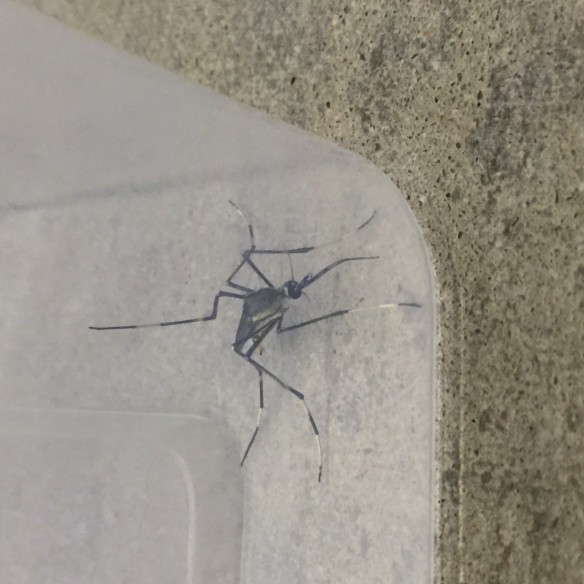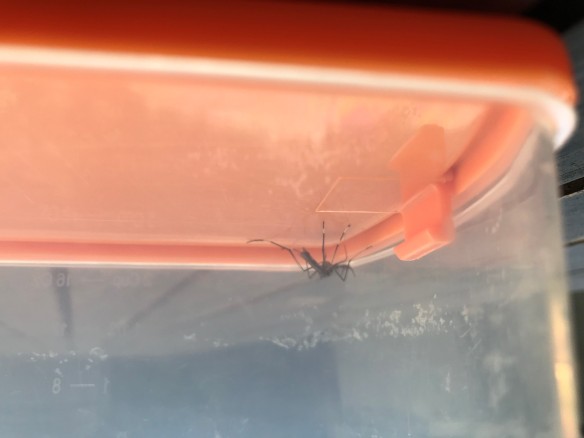
Health authorities in NSW recently released warnings to avoid mosquito bites following the detection of Ross River virus in wetlands along two major river systems in metropolitan Sydney. Whats going on and should these findings be something to be worried about?
What is Ross River virus?
Ross River virus is the most commonly reported mosquito-borne disease in Australia. The virus is spread by the bite of a mosquito and about 40 different mosquito species have been implicated in its transmission.
The disease caused by Ross River virus is not fatal but it can be severely debilitating.
Thousands of Australian’s are infected each year. We have some idea of the quantity of infections as Ross River virus disease is classified as a notifiable disease. While the official statistics indicate there are around 5,000 cases of illness across the country (there are between 500 and 1,500 cases per year in NSW), there are likely to be many more people that experience a much milder illness and so never get blood tests to confirm infection. These people won’t appear in official statistics.
What makes Ross River virus a fascinating pathogen to study is also what makes it extremely difficult to predict outbreaks. Transmission cycles require more than just mosquitoes. Mosquitoes don’t emerge from local wetlands infected with the virus, they need to bite an animal first and become infected themselves before then being able to pass on the pathogen to people.
It is generally thought that kangaroos and wallabies are the most important animals driving outbreak risk. However, we’re starting to better understand how the diversity of local wildlife may enhance, or reduce, likely transmission risk.
How was the virus found in Sydney?
The recent warnings have been triggered by the results of mosquito trapping and testing around Sydney. NSW Health coordinates an arbovirus and mosquito monitoring program across the state and this includes surveillance locations within metropolitan Sydney.
Mosquitoes are collected using traps baited with carbon dioxide. They trick the mosquitoes into thinking the trap is an animal. By catching mosquitoes, we can better understand how the pest and public health risks vary across the city and the conditions that make mosquitoes increase (or decrease) in numbers.
It mostly occurs around the metropolitan region’s northern and southern river systems and generally associated with estuarine or brackish-water wetlands. In these areas, there are often abundant mosquitoes and wildlife. Along the Parramatta River, there are often abundant mosquito populations but given the heavily urbanised landscape, there aren’t many kangaroos and wallabies.
The nuisance impacts of mosquitoes, such as Aedes vigilax, dispersing from the estuarine wetlands of the Parramatta River can create challenges for local authorities. These challenges include targeted wetland conservation and rehabilitation strategies along with ecologically sustainable mosquito control programs.
Is the detection of the virus in Sydney unusual?
The detection of Ross River virus is not that unusual. Detection of Ross River virus (as well as other mosquito-borne viruses such as Stratford virus) along the Georges River in southern Sydney is an almost annual occurrence. The local health authorities routinely issue warnings and in recent years have successfully used social media to spread their messages.
Ross River virus has also previously been detected along the Parramatta River.
While there have been confirmed local clusters of locally acquired Ross River virus in the suburbs along the Georges River, there have been no confirmed cases of Ross River virus disease in the suburbs along the Parramatta River.
There are a few reasons why more disease isn’t reported. Health authorities are active in promoting personal protection measures, sharing recommendations on insect repellent use and providing regular reminders of the health risks associated with local mosquitoes. It isn’t unreasonable to think these actions raise awareness and encourage behaviour change that reduces mosquito bites and subsequent disease.
Along the Georges River, there is clearly a higher risk of infection given the more significant wildlife populations, especially the wallabies common throughout Georges River National Park. By comparison, along the Parramatta River there are fewer bushland areas and virtually no wallabies (except for the occasional one hopping across the Sydney Harbour Bridge). Even in the wetland areas around Sydney Olympic Park, there is abundant bird life, meaning mosquitoes are probably more likely to be biting the animals than people. A study looking at the blood feeding preferences of mosquitoes in the local area found that animals were more likely to be bitten, mosquitoes actually only fed on humans about 10% of the time.
It is important that if you’re spending a lot of time outdoors in these areas, especially close to wetlands and bush land areas at dawn and dusk when mosquitoes are most active, take measure to reduce the risk of being bitten. Cover up with long sleeved shirts and long pants and apply an insect repellent. Choose a repellent that contains either DEET (diethlytoluamide), picaridin, or oil of lemon eucalyptus. Apply it to all exposed skin to ensure there is a thin even coat – a dab “here and there” doesn’t provide adequate protection. More tips here.
Also, keep in mind that just because cooler weather has arrived, the health risks associated with mosquitoes remain. That means keeping in mind that mosquitoes will be out and about just as football and netball seasons start so take along some mosquito repellent to training nights.
++
Join the conversation on Twitter!
++








